
How to Respond to (Good and Bad) App Reviews
In 2013 (Google Play) and 2017 (App Store), app developers were given the opportunity to engage with their communities and address user reviews. Being able to answer reviews plays a crucial role in ASO, as it can help to improve user experiences and eventually increase your app’s average rating score. Thanks to this, app developers can directly address issues experienced by users and assist them in their user journey.
There are some best practices to keep in mind when replying to reviews. In this blog, we’ll present the best ways to respond to positive and negative reviews, so that you can show your app reviewers that you truly care about them.
Why are app reviews important?
Reviews are one of the most impactful elements of your app. They contribute to your app’s average rating and to its image, as new users tend to read reviews and others’ experiences before downloading an app. In fact, it is estimated that 9/10 consumers explore online review sections before deciding whether to make a purchase or not.
According to statistics, the number of users who read reviews online is growing continually, and 57% of users claim they wouldn’t be very likely to use a product or a service that doesn’t care to respond to reviews.
Below is an example of how replying well to your app users can help increase your average rating and, as a result, your app’s performance. After reaching out to an unhappy customer and fixing the experienced issues, Lifesum succeeded in getting the user to update a previously low-rated review to a 5-star rating.
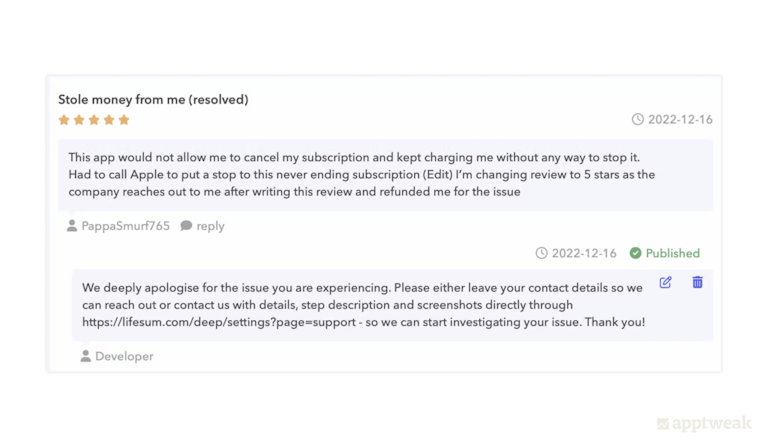
Therefore, replying to reviews can positively impact your average rating—but this is just one benefit. In fact, carefully managing your reviews can lead to other benefits, such as:
- Improved user experience, which can help increase your app’s average rating. This means your app’s reviews and ratings can strongly impact your app’s conversion rate.
- Valuable feedback and insights on your app/product, its strengths, weaknesses, etc. Monitoring your app’s reviews can help you gather valuable information on your users’ favorite features, their pain points, and what new functionalities they would eventually like to find in the app.
- Appeal to the store algorithms. On the App Store, the more positive reviews and ratings your app has, the better its chances of ranking in the store. Google Play goes a step further—as of February 2023, apps with an average rating below 3.0 stars will not be displayed in the top charts, with more visibility and promotion opportunities given to apps with a higher average rating score.
How to respond to app reviews
1. App Store Connect
App developers can respond to reviews in App Store Connect, from iTunes Connect. Once a developer responds to a review, the review owner receives a notification and is asked if he/she wants to update the review and/or rating. As we have seen previously, this represents a great opportunity for app developers to address issues users experience and engage with them.
2. Google Play Console
On the Google Play Store, app developers can reply to reviews via the Google Play Console.
3. On AppTweak
You can also centralize your work and reply to your app reviews for both stores via AppTweak’s Review Management tool:
- On the App Store, just connect a valid Apple Store Connect integration. Once your reply has been published, you’ll still be able to edit/delete it through the tool.
- On Google Play, you can start replying to your reviews from AppTweak once you have connected your Google Reviews integration. Similar to iOS, you can edit an already published reply. However, you will not be able to delete it from the store.
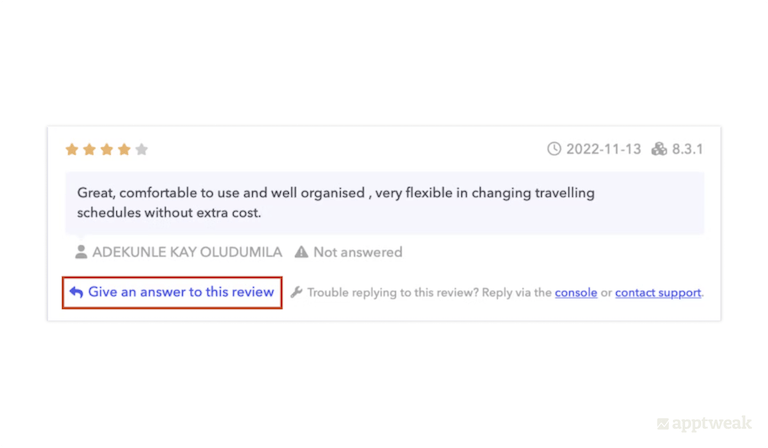
Best practices when replying to reviews
In this section, we’ll share best practices you should take into account when replying to app store reviews. Ideally, you should respond to both positive and negative reviews – but if your time/resources are limited, you should prioritize replying to the reviews with the lowest star rankings and/or those highlighting technical issues. It is important here to make users feel heard and communicate that you are working on fixing the issues they are experiencing.
1. Be clear in your communication
First of all, thank users for taking the time to leave a review for your app, regardless of whether their feedback is positive or negative. Be concise and clear in the way you communicate with your users, and address the feedback left by the reviewer in an efficient manner. If you have received a negative review, don’t get defensive! Instead, use that feedback to improve your app and show your community that you are open to listening to users, addressing their problems, and respectfully offering a plausible solution.
2. Be consistent with your brand voice and respect privacy
Adopt a friendly tone that is consistent with your brand. If many people in your company share the responsibility of replying to reviews, find a consistent voice that users can recognize across the multitude of replies. Think about how your brand approaches customers: in a more formal or informal tone? Using humor? Here, you should be careful not to be too formal, as it can create distance between you and your users. Also, remember to be respectful. Don’t display any sensitive information related to users and don’t include any personal information in your answers.
Hopper is a good example of an app that adopts a friendly tone with its users, whether reviews are positive or negative. The app goes one step further and personalizes each reply while staying true to its brand voice with each reviewer.
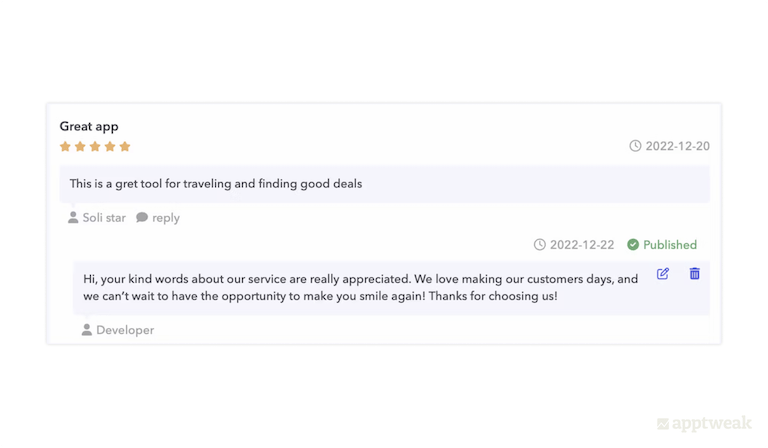
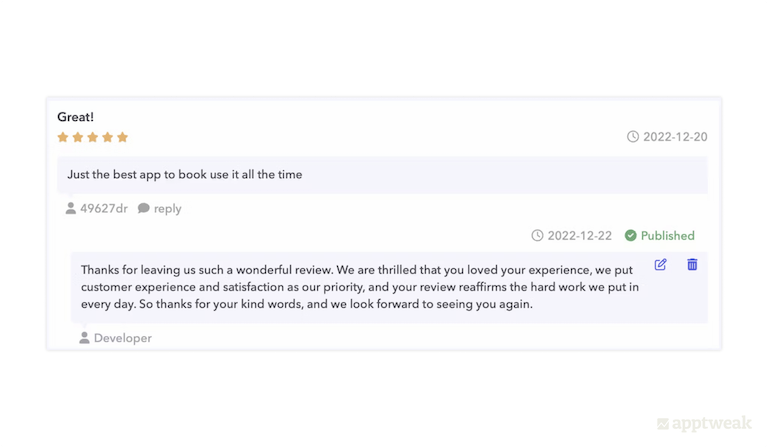
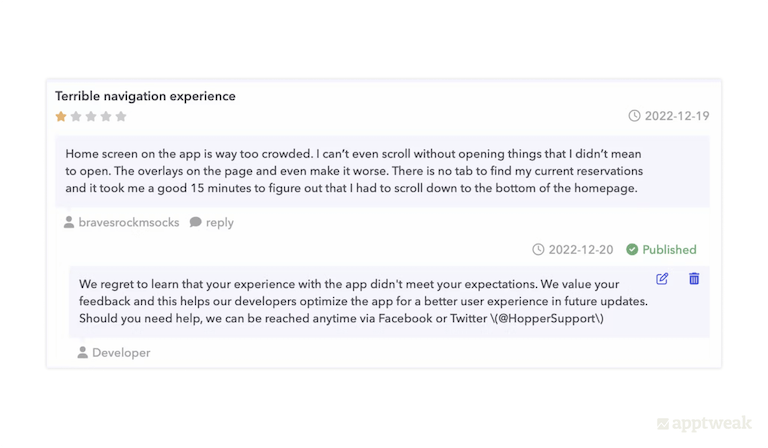
3. Be reactive
Try to answer your reviews as soon as possible, especially the negative ones. It is recommended to make the effort of replying within 24 hours. Quickly addressing the issues your users are facing might make it more likely for them to improve their rating.
4. Avoid promotions and spam
It’s important to listen genuinely to your customers’ complaints. Monitoring the reviews your app receives is a great learning experience, as it helps you understand the areas your app is performing well and what should be improved. So take advantage of this stage to truly show that you care about your users. Don’t exploit the replies given to users to further promote your products or services.
5. Explain how you are working on improving the user experience
Let your reviewers know you are constantly working on improving your app and, eventually, the issues they are experiencing. If users are facing an important bug, be quick to reach out and explain when they can expect to have the issue resolved. This could help them – and other users reading this review – feel less frustrated.

6. Send customized replies
When possible, try to reply to your users in a manner that is as tailored to their needs as possible, so they feel they are talking to a person, not a bot. It is important to make users feel that the issue they are facing truly matters, and that you are taking action to improve their experience. If you use templates to manage your reviews in a more efficient way, try to make them as personalized as possible. For an extra touch of personalization, you can also use their name and your own when answering a review.
Expert Tip
Avoid replying to your users in a way that suggests you have completely missed the point of their contribution. This can lead to even more dissatisfaction and look unprofessional.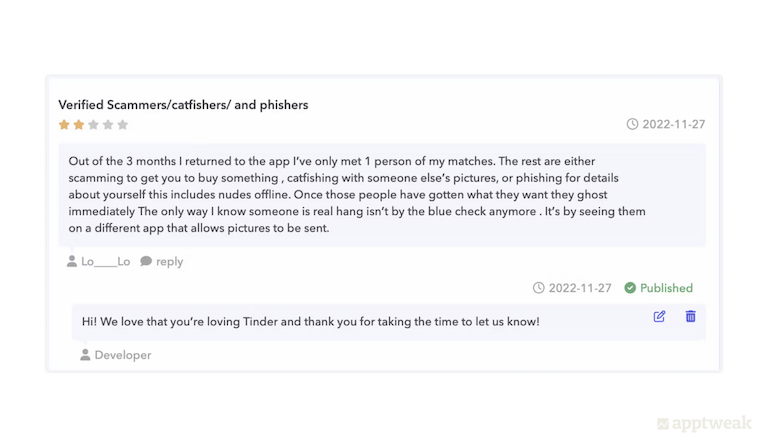
7. Avoid negative words
Avoid using negative words in your replies, such as “cannot,” “difficult,” “impossible,” “unfortunately,” etc. Instead, aim for a happy tone by using positive words when engaging with users. Accentuate the value that your product and/or service can provide.
8. Provide reviewers with a point of contact
Add contact details to help your app users/reviewers get in touch with you in case they need more help or information. Offer them an email address, a contact form, a social media link, or a website they can use. Taking the conversation outside the app stores is a good opportunity to further investigate (privately) the issues users are experiencing, and show them you are truly interested in offering a solution.
However, avoid too frequently redirecting reviewers to other channels like support emails or help desks. This may suggest that you are trying to push the issue back for later. Instead, make replies that can actually help your customers.
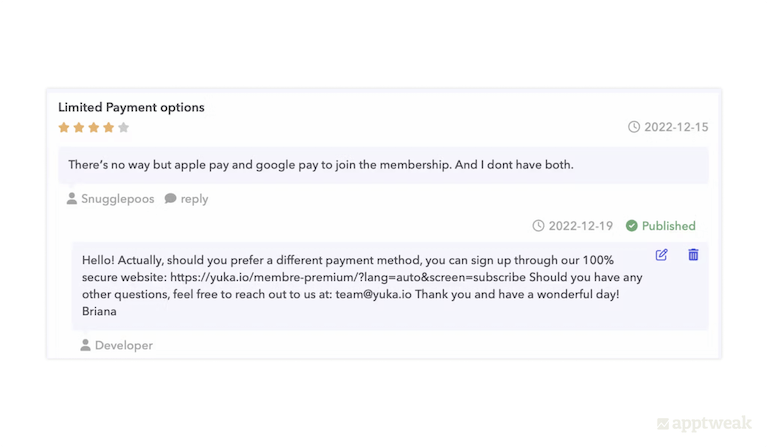
Note: From time to time, you may receive a review that violates the terms and conditions of the App Store or Google Play. In these cases, app developers can report any users who display offensive behavior.
Conclusion
Taking care of your app reviews & ratings is a great way to contribute to the efforts you are already making in your ASO strategy. Having a high average rating score will not only help your app in the eyes of the store algorithms, but also most likely increase your app’s downloads and conversion rate.
In fact, people tend to be influenced by the opinions of others, meaning that an app that is strongly recommended by users will have more chances of being downloaded. Whereas, an app with lots of users complaining about its quality will be negatively impacted. As a result, make a consistent effort to monitor the reviews your app receives, engage with users, and respond to their needs.


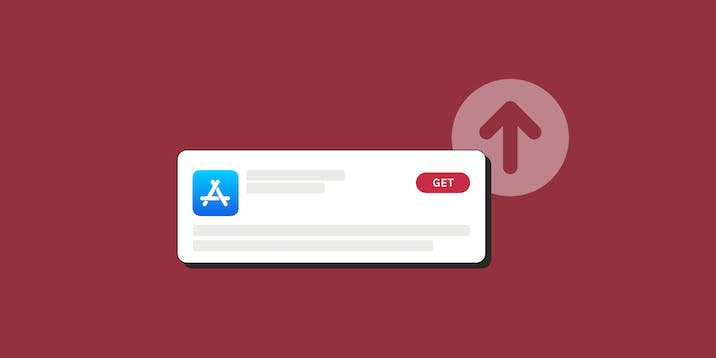
 Emily Sugrue
Emily Sugrue
 Mariia Chernoplyokova
Mariia Chernoplyokova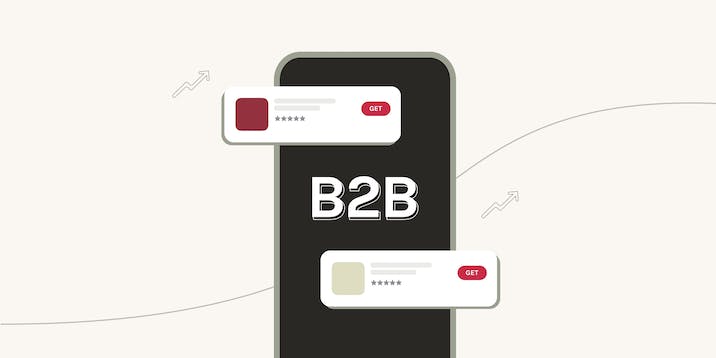


 Sarah B. Touimi
Sarah B. Touimi
 Yuliya Tsimokhava
Yuliya Tsimokhava